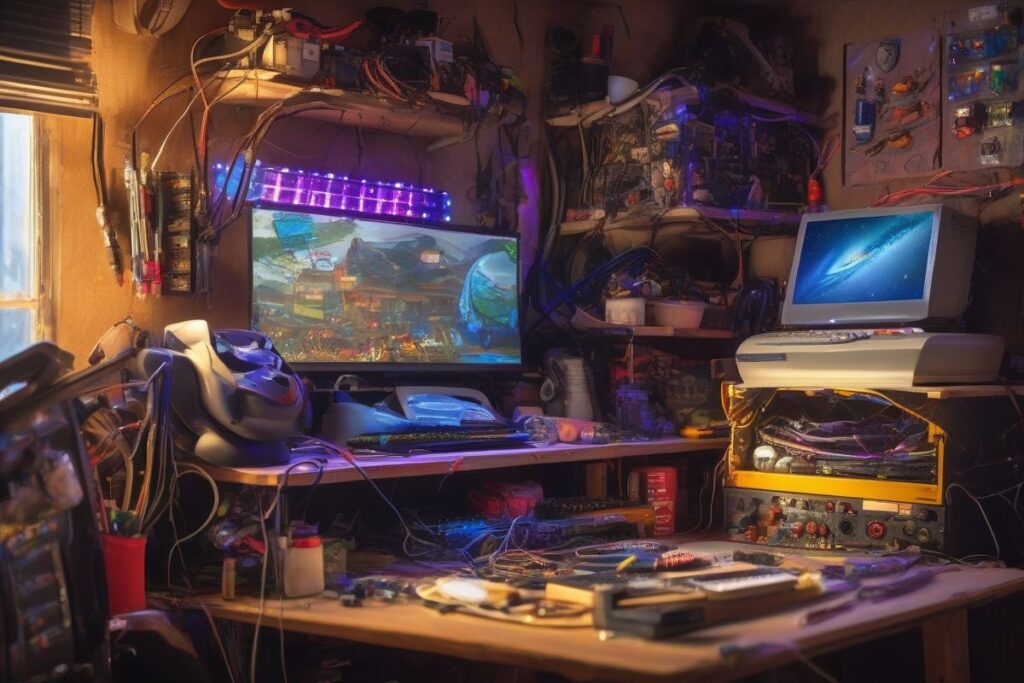DIY Tips to Upgrade Your Trash Gaming Rig on a Budget
Let’s be honest, we’ve all been there. Staring at our aging gaming rig, wishing it could handle the latest titles without sounding like a jet engine about to take off. A full system overhaul can be expensive, but fear not, fellow budget gamers! There are plenty of cost-effective DIY upgrades that can breathe new life into your trusty, albeit dusty, machine. This guide will walk you through some simple yet effective ways to boost performance without breaking the bank. From tweaking software settings to strategically swapping out components, we’ll cover everything you need to know to transform your trash gaming rig into a treasure. Get ready to experience smoother gameplay, improved visuals, and a renewed sense of pride in your resurrected gaming companion. Let’s dive in and unleash the hidden potential within your budget build!

Boosting Performance with Software Tweaks
Optimize Your Operating System
Before you even think about cracking open your case, there are several software optimizations that can significantly improve your gaming experience. Start by disabling unnecessary startup programs that consume valuable system resources. Then, delve into your power settings and select the high-performance option to prioritize gaming performance. Finally, ensure your graphics drivers are up to date. Outdated drivers can lead to performance bottlenecks and compatibility issues.
Another crucial step is to uninstall any bloatware that came pre-installed on your system. These often-unnecessary programs can bog down your system, so removing them can free up valuable resources. Consider using a dedicated game booster software to optimize system settings specifically for gaming. These tools can temporarily disable background processes and prioritize game resources.
Finally, defragmenting your hard drive (if you’re still using a traditional HDD) can improve loading times and overall system responsiveness. This process reorganizes fragmented files, allowing your system to access them more efficiently. For SSD users, ensure TRIM is enabled to maintain optimal performance.
Overclocking for Beginners
Overclocking your CPU and GPU can yield noticeable performance gains, but it’s important to approach this cautiously. Start by researching your specific hardware to understand its overclocking potential and limitations. Use reputable overclocking software and monitor temperatures closely throughout the process. Incremental increases are key to avoid instability.
Begin with small adjustments to the clock speed and voltage, testing stability after each change. Stress testing your system with demanding games or benchmarking software can help identify any potential issues. Keep in mind that overclocking can void your warranty, so proceed with caution and at your own risk.
A stable overclock can significantly boost your gaming performance, but an unstable one can lead to crashes and even hardware damage. Patience and careful monitoring are essential for a successful overclocking experience. Remember, a small, stable overclock is better than a large, unstable one.
Strategic Hardware Upgrades
RAM: The Easy Win
Adding more RAM is often the most cost-effective way to improve gaming performance, especially if you’re running with a limited amount. Check your motherboard’s specifications to determine the maximum RAM capacity and supported speeds. Aim for at least 8GB for modern games, but 16GB is increasingly becoming the sweet spot.
When choosing RAM, consider the speed and latency, as these factors can impact performance. Ensure the RAM you choose is compatible with your motherboard. Installing RAM is a relatively simple process, but be sure to consult your motherboard manual for specific instructions.
Upgrading your RAM can drastically improve multitasking capabilities and reduce stuttering in games. If you’re experiencing frequent lag or slow loading times, a RAM upgrade is often the easiest and most affordable solution.
SSD: A Game Changer
Swapping your old hard drive for a solid-state drive (SSD) is one of the most impactful upgrades you can make. SSDs offer significantly faster loading times, improved system responsiveness, and a smoother overall gaming experience. Even a smaller capacity SSD for your operating system and frequently played games can make a world of difference.
Cloning your existing operating system to the SSD is the easiest way to migrate your data and settings. There are various cloning software tools available to simplify this process. Once installed, you’ll immediately notice the difference in boot times and game loading speeds.
While SSDs are more expensive per gigabyte than traditional hard drives, even a smaller capacity SSD can drastically improve your system’s performance. Consider prioritizing your operating system and most demanding games on the SSD for the best results.
Graphics Card: The Big Guns
If your budget allows, upgrading your graphics card can provide the most significant boost to gaming performance. Research current graphics card offerings and choose one that fits your budget and performance goals. Ensure your power supply is sufficient to handle the new card’s power requirements.
Installing a new graphics card is relatively straightforward, but requires proper handling to avoid electrostatic discharge. Be sure to uninstall your old drivers before installing the new card and its corresponding drivers.
A graphics card upgrade is the most impactful way to improve frame rates and visual fidelity in games. If you’re looking for a significant performance boost, a new graphics card is the way to go. Consider buying a used graphics card from a reputable seller for a more budget-friendly option.

Leave a Reply